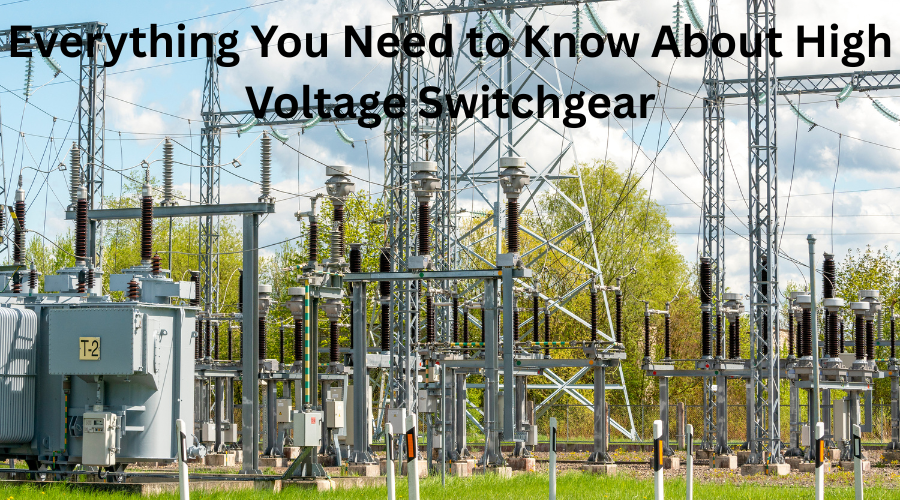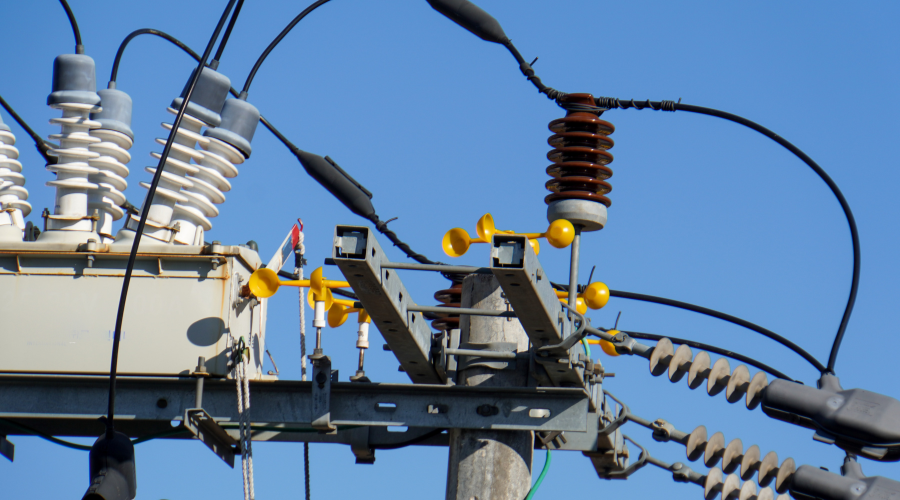


It is an entire assembly where multiple electrical components coordinate to provide a safe electrical supply. You can also call it one of the units in a transformer substation that ensures a secure flow of high-voltage energy for large-scale needs. Its job is to transmit electricity safely to the end users, which are industries and commercial units. What it has to do is receive incoming high-voltage electricity and then supply it to final high-voltage users.
Usually, energy-producing companies and factories require high-voltage switchgear. The reason is apparent: the range of voltage supply.
-Commercial sectors like markets, supermarkets, and hospitals.
-Power generation plants
-Turbines and generators
-Renewable energy production grids
Since industrial appliances need a stable flow of high-voltage electricity, they need a standard voltage range. This is where a switchgear must maintain a standard voltage flow, which ranges between 75kV and 230kV. An HV switchgear must retain the limit voltage within this range to prevent fluctuations from a high-voltage input. All it has to maintain is stability in the flow, so no appliance or entire electrical system can face surges and short circuits. Some HV switchgear can also work with a 36 kV limit to maintain stability for specific industrial machines.
-It stabilizes the high-voltage input and then transmits it for safe consumption.
-This stable power flow becomes safe for industrial machines and appliances.
-There is a stable flow and high prevention of short circuits in industrial and commercial electrical systems due to it.
-As soon as it detects a surge in the high-voltage flow, it immediately isolates the system to protect the appliances.
-An HV switchgear prevents damage of all types through this sharp response.
-Even potential energy loss doesn’t take place because of it.
-All the switches get even power distribution through a safe transmission process.
-A stable and consistent protection from overload is always there.
-What makes it reliable is its automatic shut-off system for the safety of all appliances.
-Managing high loads in the industrial and commercial sectors becomes possible with the help of high-voltage switchgear.

Since a high-voltage switchgear consists of various components, it is necessary to identify them. Each factor adds to the overall success of an HV switchgear.
1. Disconnectors isolate circuits by shutting down completely to protect from short circuits. Additionally, they facilitate maintenance for safe operations.
2. Circuit breakers interrupt the supply against fluctuations and faulty voltage. They instantly break the connections as soon as they detect excessive load.
3. Fuses protect sensitive connections and appliances from sudden surges. They prevent overload and sudden spikes in current before they can reach the appliances.
4. Busbars ensure there is a smooth flow of electricity within the switchgear system.
5. Control units are sensors that monitor electrical faults and respond accordingly.
Not just a single type is used in the entire energy production sector because there are different challenges for engineers. They require subtypes of HV switchgear to address each condition, delivering the kind of results that powerhouses and industrial users need.
It is a standard type of HV switchgear where SF6 (sulfur hexafluoride) gas is used as a dielectric insulator. This gas prevents short circuits by maintaining system isolation. It features an enclosed and space-saving structure, making it a suitable choice for various sectors. However, there are concerns about the gas used in it, which is not environmentally safe.
Then a similar type comes along, which doesn’t use SF6 gas but air instead. Since it needs air as an insulating medium, its structure is large and open. Therefore, it occupies more space even though many call it a low-cost solution.
Then a third type comes, which is a combination of gas and air-insulated systems. It provides a solution by using SF6 gas as well as air as an insulating medium. Some energy sectors and industrial users prefer it based on their needs. However, it has complex maintenance.
Everything you need about high-voltage switchgear is in it. From providing a stable flow of high-voltage electricity to safely controlling the voltage, everything is performed by an HV switchgear. Also, its subcomponents contribute to the efficient performance.
What is the high-voltage switchgear used for?
It maintains the voltage between 75kV and 230kV, and protects the appliances from short circuits and similar damage.
Is switchgear DC or AC?
It can be either AC or DC, based on the end-user's requirements.
Is switchgear a transformer?
No, switchgear and a transformer are different equipment. A transformer converts the voltage level, while a switchgear protects the appliances from short circuits.
What are the different types of high-voltage switchgear?
Air-insulated switchgear, gas-insulated switchgear, and hybrid switchgear. They differ from each other in their insulating medium.
What is the difference between a switchgear and a substation?
A substation transforms the voltage and distributes it to small units. On the other hand, a switchgear ensures the appliances are safe from surges, short circuits, and other faults.
The advent of smart grids has changed how electric power is produced, distributed, and consumed.
READ FULLHigh Voltage Switchgear It is a
READ FULLTransformer substations are like the core of our electrical systems. They transfer power to our h
READ FULL